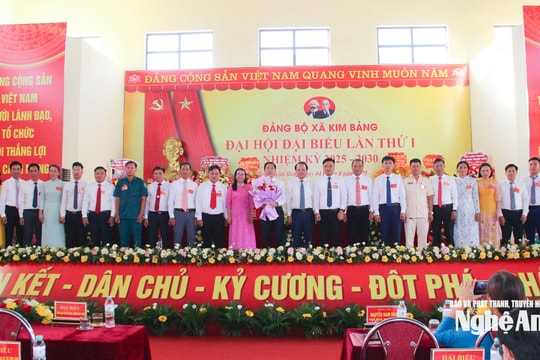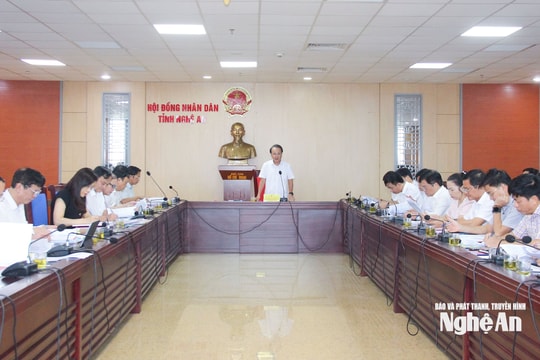Kim Bang, firmly on the new journey...
The border area of Kim Bang, a newly established locality based on the merger of three communes Thanh Ha, Thanh Thuy and Kim Bang, is entering a new stage of development. In the context of many intertwined opportunities and challenges, the Party Committee and People of Kim Bang have affirmed their determination to build a clean and strong Party, mobilizing all resources for comprehensive and steady development in the border area of the Fatherland.
Strategic geographical location
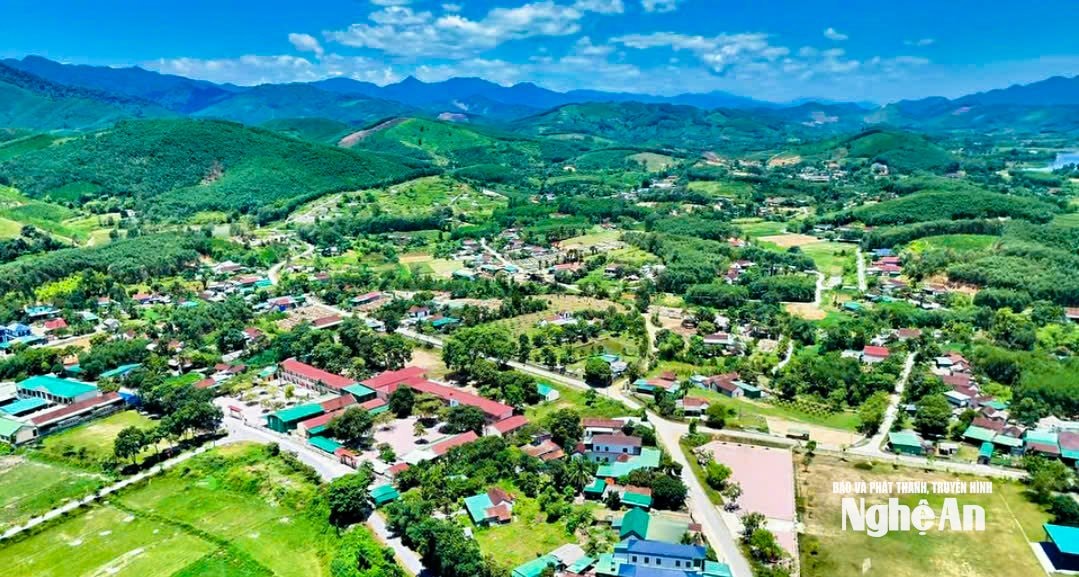
After merging from three communes Thanh Ha, Thanh Thuy and Kim Bang, Kim Bang commune officially became a new border commune with an important strategic position, bordering Xay Cham Phon district (Bolikhamxay province, Laos). With a natural area of over 183 km² and a population of nearly 28 thousand people, Kim Bang has both development potential and the responsibility of maintaining security and defense at the southwestern gateway of the province.
The border position not only brings advantages in connecting trade and cultural exchange between the two countries, but also responsibilities in terms of national defense and security. The mountainous terrain, complex natural disasters and incomplete infrastructure are existing barriers. However, the will of the community and revolutionary tradition have helped Kim Bang turn challenges into motivation: from planning forest planting areas, developing tea, to building infrastructure to serve trade, all are aimed at improving people's lives and maintaining border security.

The process of perfecting the political system after the merger was carried out urgently: The commune Party Committee was established and now has 45 grassroots party organizations with a total of 1,082 party members; the first Executive Committee consists of 23 comrades, the Standing Committee has 10 comrades - expected to be the core leadership to help the locality overcome the transition period. Mountainous terrain, complex natural disasters, and unsynchronized infrastructure are major barriers. However, with the spirit of solidarity, Kim Bang has gradually exploited its advantages: expanding the area of industrial tea, developing raw material forests, aquaculture, investing in transportation and irrigation to serve production and trade.
Economic transformation, changes in life
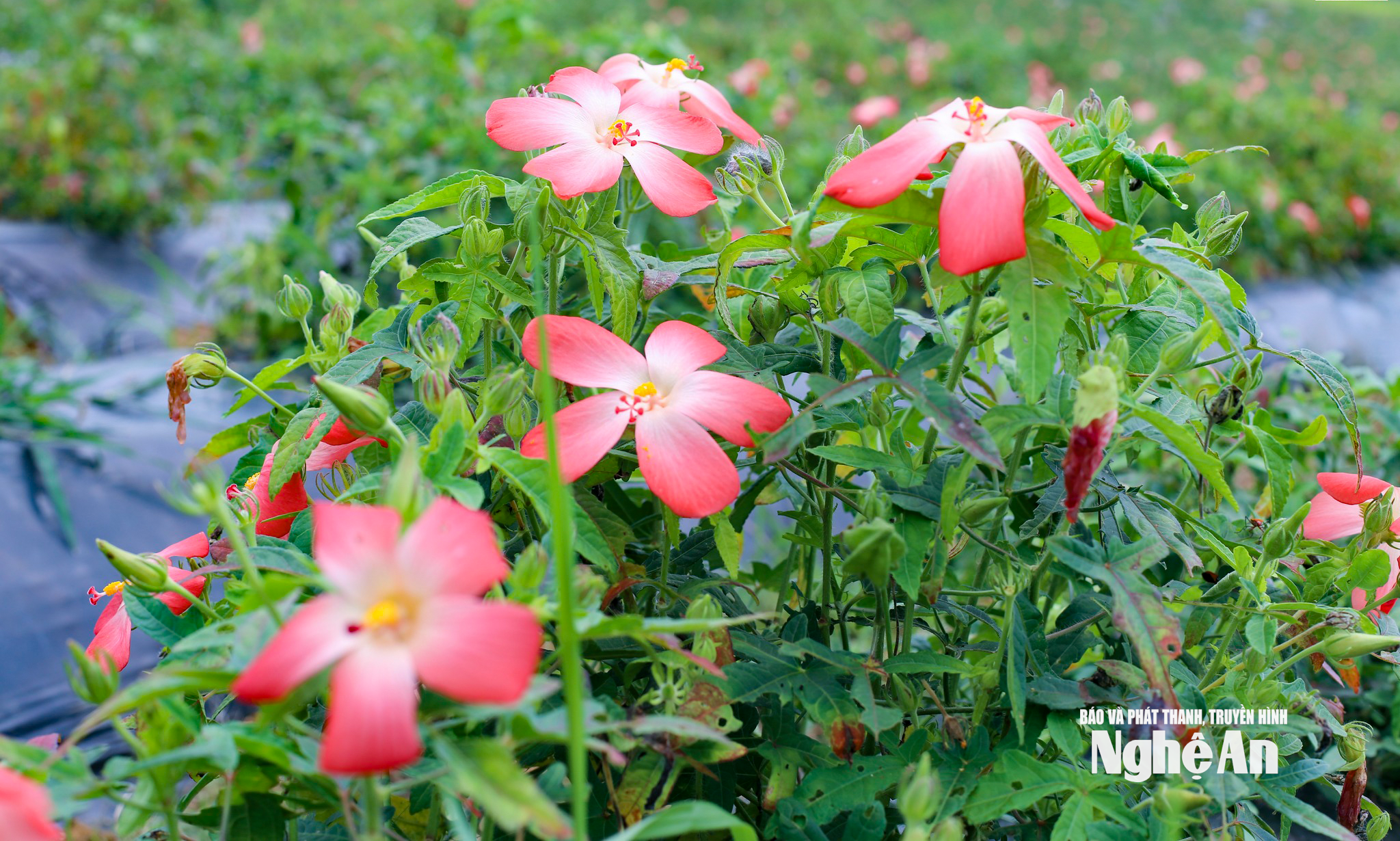
The 2020-2025 term is a challenging period but also a time for Kim Bang to transform. In the context of the pandemic, natural disasters and market fluctuations, the locality has maintained its economic growth momentum: the growth rate of total product value is estimated at 10% and the average income per capita is estimated at 52 million VND/year - figures that show the effort to maintain growth in an unfavorable context. The economic structure has also shifted significantly: agriculture - forestry - fishery accounts for 34.23%; industry - construction accounts for 24.12%; trade - services account for more than 41%.
But it is worth noting that these numbers are not just data but reflect the specific lives of the people. On the hillsides, people have expanded the industrial tea area to about 1,000 hectares by 2025, nearly completing the term target and occupying an important position in the local agricultural production structure. The area of forest planting materials has increased to 387 hectares, exceeding the set target of both creating jobs and protecting forest land; increasing the forest cover rate to nearly 60% (exceeding the target of 56%), showing a sustainable development direction, in harmony between livelihoods and the environment.
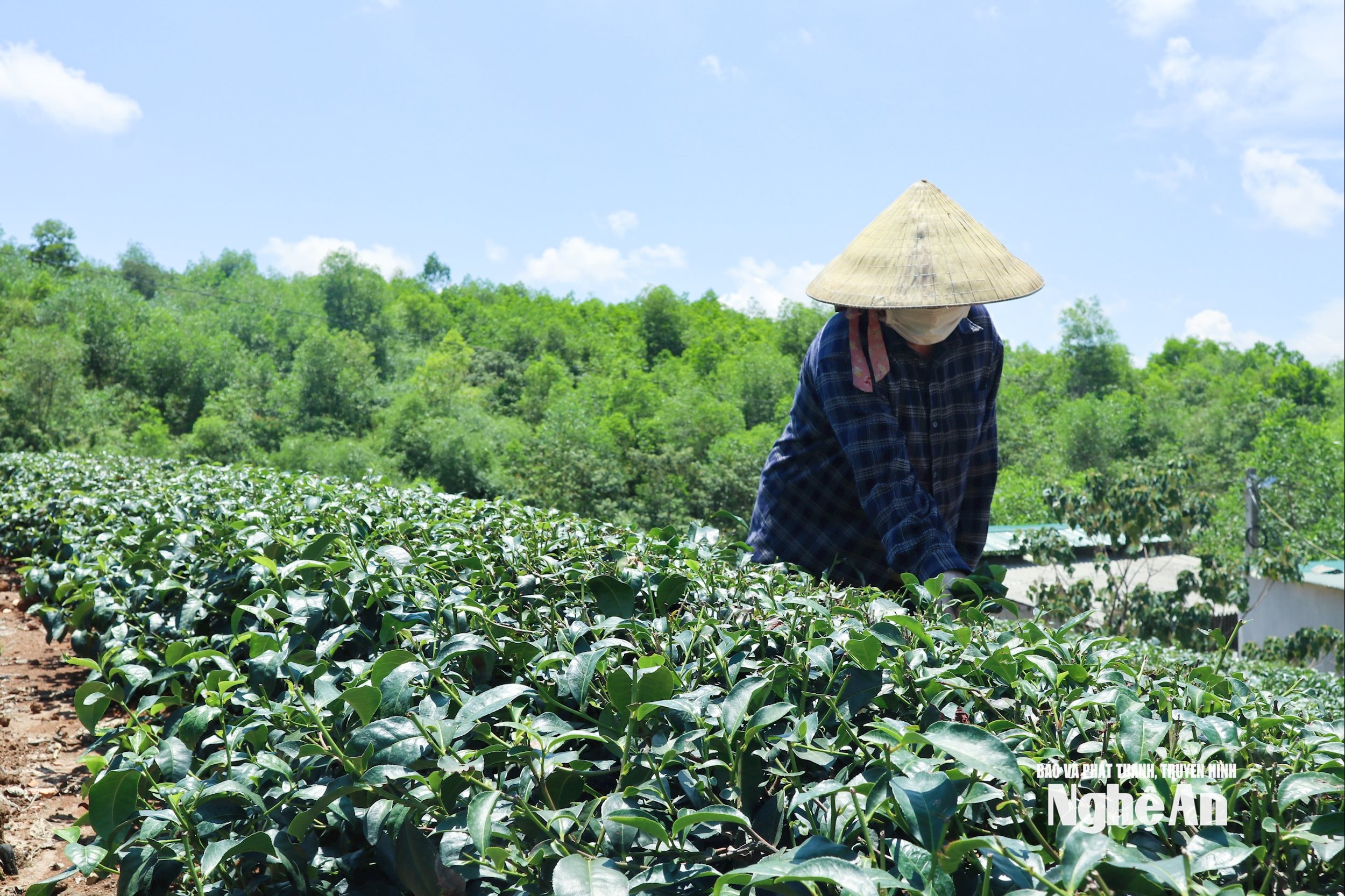
Food production, livestock and aquaculture also made paradigm-changing strides: the total cultivated area reached 2,292 hectares (93.58% of the target), rice almost reached the target (1,532/1,533 hectares), while the aquaculture area exceeded the target (340 hectares implemented compared to the target of 270 hectares), showing that farmers are gradually diversifying their livelihoods and taking advantage of the locality. The total food output reached 11,719 tons (78.45% of the target), showing that there is still room for productivity increase, but the direction of commodity production is becoming clearer.
Along with production, the development of trade and services has truly permeated life. Markets, private shops, small-scale warehouse services and handicrafts (carpentry, unburnt bricks, mechanics, agricultural and forestry processing) have contributed to diversifying household income sources, raising the proportion of services to nearly 42% of the economic structure. Social security work has also changed significantly: the poverty rate has decreased to 2.2%; health insurance covers nearly 94% of the population; the rate of clean water and waste treatment has been improved.
In social life, changes are evident: schools are invested in, education quality is improved; the health system is strengthened, the health insurance participation rate in 2024 is 92% and is estimated to be 93.6% in 2025; the expanded immunization program maintains a full vaccination rate of about 98%; the rate of households using hygienic water is 92%; the rate of solid waste collected and treated is 98.33%... This shows the effort to improve the basic living conditions of the people.
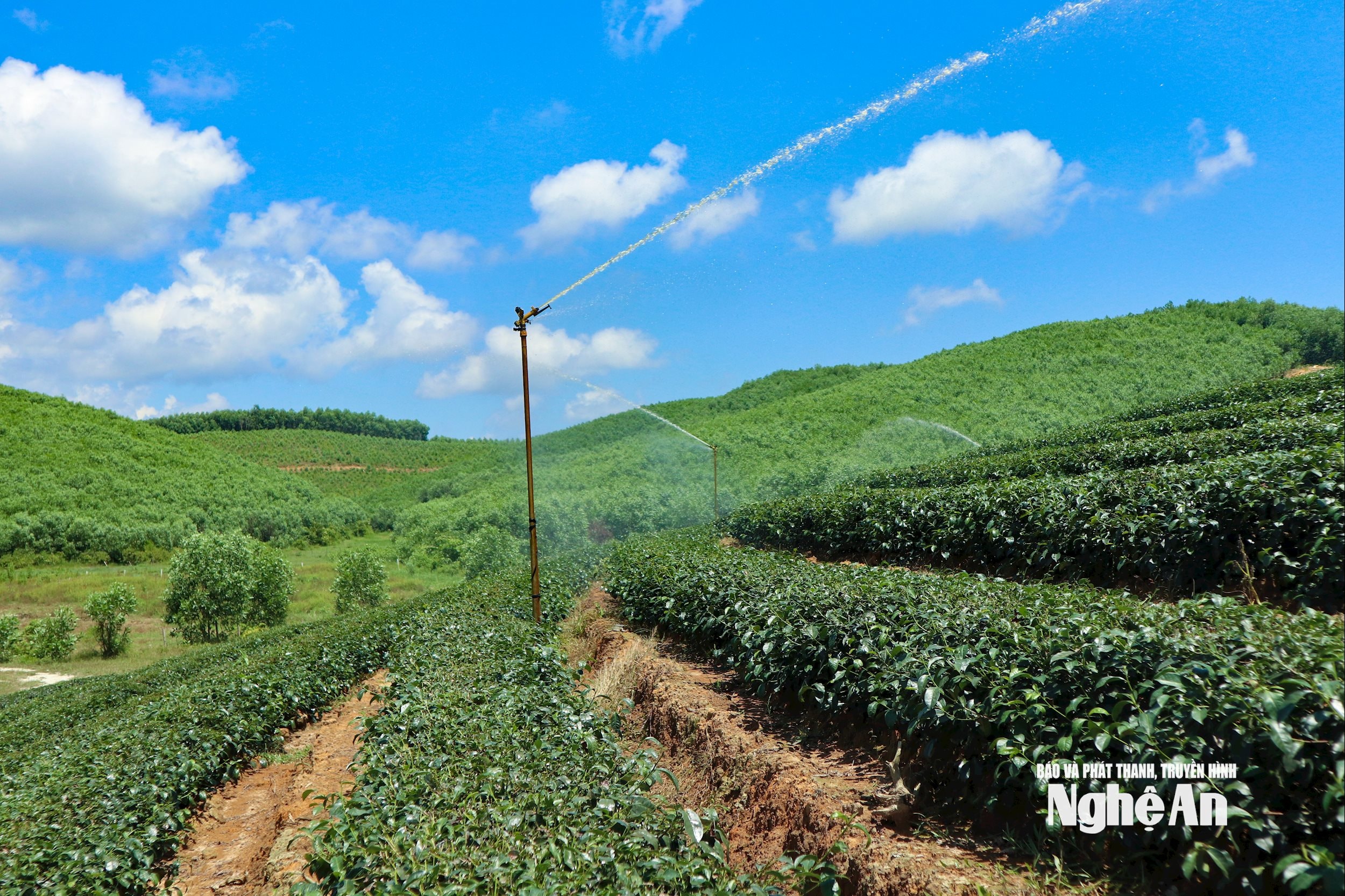
Resource management, forest protection, raw material forest development, and forest fire prevention have been given attention, with forest development linked to community livelihoods and climate change response as the focus. Land management, planning, and completion of technical infrastructure (electricity, irrigation, rural transport) have been put on the priority list, laying the foundation for further steps in socio-economic development.
Notably, the work of building the Party and the political system has become more substantial: Party cells have been consolidated, and the quality of Party cell activities has been improved; the work of developing Party members has been maintained with clear goals, aiming to create a source of suitable leaders for the new period. These changes have strengthened the people's trust in the local Party Committee, which is a prerequisite for realizing development goals.
Clear purpose, sustainable path

Entering the 2025-2030 term, Kim Bang not only set big goals, but also concretized them into clear targets. The commune strives for an average growth rate of 10-11%/year, an average income per capita of 82-86 million VND, and a budget revenue of more than 32 billion VND by 2030. These are numbers that show the aspiration to rise, but more importantly, they are linked to practical orientations.
In the economic field, Kim Bang determined to continue developing tea, raw material forests, aquaculture in the direction of goods, linked with processing and consumption. Agriculture is no longer self-sufficient production but becomes the foundation for forming OCOP products, at least 2 products meeting 3-star standards or higher. Trade and services will be promoted based on the advantages of border gates, logistics, and warehouse services. When services become the "locomotive", the economic structure of the commune will continue to shift, creating a stronger momentum.
Along with economic development is the improvement of social quality. By 2030, Kim Bang aims for 100% of schools to meet national standards; the poverty rate to be reduced to less than 2%; over 98% of the population to participate in health insurance; all household waste to be collected and treated; 100% of households to use clean water. That is not just a number, but a commitment to a more civilized and sustainable life for people in the border area.

The focus throughout is still on Party building. The Party Committee sets a target of admitting 33-38 Party members each year, and an increase of 165-190 comrades over the entire term; striving for 100% of villages and hamlets to have Party members as hamlet chiefs by 2030. This is a step to consolidate the political system from the grassroots, ensuring that every Party decision is spread to the people. At the same time, inspection, supervision and anti-corruption work is tightened, linked to the requirement for cadres and Party members to set an example.
With the characteristics of the border, the task of maintaining national defense and security is identified as a pillar. Kim Bang strives to build a "commune that meets security and order standards", a "commune that is clean of drugs"; at the same time, strengthen coordination with the border force, consolidate the Vietnam - Laos friendship, and ensure a peaceful and stable border. This is both a political responsibility and a condition for sustainable socio-economic development.

With the achieved foundation and clear orientation, Kim Bang is entering a new stage of development. The aspiration to build a safe, prosperous and sustainable border area will become the driving force for the Party Committee, government and people of the whole commune to continue to unite and make efforts on the road ahead.

.jpg)
